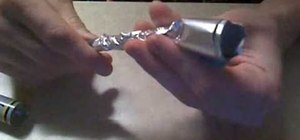

I coated the chamber walls with maple syrup before the first few smokes. The pipe is 6 inches long and weighs 2 1/4 ounces. The bowl is 2 1/4" tall, with 7/16" thick walls tapering to 1/4" at the rim. It has a 7/8" diameter tobacco chamber, 2" deep. My favorite of the three is the billiard.

I've been smoking three of my cherry pipes: a massive straight Dublin, a bent billiard, and a long-shanked bent egg. The wood was kiln dried and had been sitting in his temperature- and humidity-controlled shop for ages (this guy is a wizard with a moisture meter), so it was dry. The fellow I was buying spruce trim and flooring from in Alaska had a piece of 2X8 cherry that I talked him out of when I started making pipes in the fall of 2002. To date, I've made pipes from cherry, apple, olive, hawthorn root, rock maple, black palm, myrtle, walnut, curly ash, ebony and pawlonia. It provides a welcome break from chasing sandpits in briar. Whenever I get my hands on a chunk of hardwood out of which I can squeeze a stummel, I build a pipe. Briar is hard to beat for the sheer beauty of the grain, its smoking qualities, and its durability, but other species of hardwood will give a good smoke. During WWII, northern European pipe makers switched to beech when supplies of briar from the Mediterranean region were cut off, and American pipe makers used mountain laurel. Given that folks around the world have been smoking one thing or another for millennia, I imagine that nearly every species of wood has been used for a pipe. Photos of some of the pipes mentioned in this article can be seen on Tim's web site at ] Tim places some of his pipes on eBay, where his handle is tcfullerpipes. Some of the bowls are on his web site, but they are primarily intended for local craft fairs. He works solely at home, turning pipes on the lathe, and also produces bowls, pepper mills, rolling pins, pencil holders, tampers, candle sticks, napkin rings, match holders, and pipe cleaner holders. Tim says that he'd wanted to try wood turning for decades, so he bought a lathe when he was setting up his shop. The market is small, and much of the market share is already captured by the brand names." Tim says that "It still remains to be seen if pipe making is an economically sound venture. They bought a house in Troy with an oversize two-bay garage, and Tim set up shop in half of it.

Tim's wife is in her second year of law school at the University of Idaho in Moscow, and his son, who does all Tim's web site work, is in his third year at the University of Idaho. Tim and his family moved to Idaho in the summer of 2003 after 12 years in Alaska. He has a weakness for exceptionally beautiful wood, so pipe making is a "good fit" for him. "What else can one do with a BA in English?" Tim asks. Tim had been working with wood, or been in the woods, all his life-building boats logging, and working construction.

He was building a deck on his house in Alaska when, for some reason, he thought, "By golly, it'd be nice to sit out here and smoke a pipe." Then he started making pipes. Tim tells me that he hadn't smoked a pipe since his early teens when he got interested again in the fall of 2002. [First, my thanks to Jeff Loid, who has almost earned the title of Assistant Newsletter Editor for his work in making contacts and setting up this article, as well as others that will follow. Intorduction by Bill Unger, editor of The Collector Originally published in The Collector, the newsletter of the NASPC and added to Pipedia by permission.


 0 kommentar(er)
0 kommentar(er)
